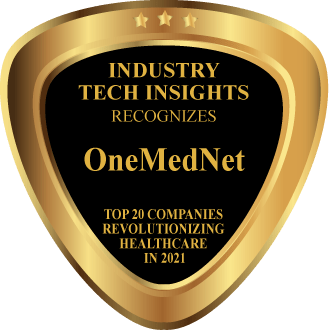
- October 30, 2025 8:38 am
- California

Jeffrey Yu
MD, Founder & CMO

Mike LaChance
CEO
Today life science companies, typically – pharmaceutical companies, Artificial Intelligence (AI) developers, medical device businesses, and clinical research organizations (CRO)—share the same widespread challenge in obtaining “insight-rich”, high-quality patient data that explicitly matches their precise cohort specifications. A recent report by Deloitte in 2020 found that 70 percent of their Biopharma interviewees noted a lack of research-grade data is hindering their efforts to incorporate Real World Evidence (RWE) into R&D. Furthermore, 80 percent of these interviewees are entering or seeking to enter into strategic partnerships to access new sources of Real World Data (RWD).
Obtaining this data can substantially accelerate their own time to market introductions if the data unequivocally meets their needs and that of third-party reviewers (e.g., FDA). In addition to finding the exact clinical attributes, the cohort requirements often stipulate that the data must represent larger population diversity, such as geographical dispersion and ethnicity variance.
OneMedNet can uniquely meet the stringent cohort demands using advanced technologies (AI/ML and NLP), searching across a federated network that is de-identified, indexed, and immediately searchable. In-house clinical experts bring multi-step data inspection protocols to ensure that all facets of the cohort specification are assuredly met. “Our meticulous and multi-step data curation process is unmatched in the industry. This process enables our life science customers to receive, and employ, data that stands up to all the rigors of prospective clinical trials,” says Mike LaChance, CEO of OneMedNet. “Furthermore, if this same life science company requires assistance with regulatory requirements such as Case Report Forms, OneMedNet has the distinct ability to fulfill those needs.”
OneMedNet was founded in 2009 by Jeffrey Yu, M.D. to solve a deficiency in how clinical images were shared between healthcare providers. Their product BEAM™ image exchange has enabled the successful sharing of images for over a decade. As this market need moved through its normal product lifecycle, OneMedNet shifted its innovation focus to the significant and emerging market opportunity involving the demand and utilization of RWD, specifically, data involving clinical images. OneMedNet was able to leverage internal technologic competencies, along with a large healthcare provider installed base, to quickly capitalize on its first-mover strategy. OneMedNet iRWDTM was provided to the first life science company in 2019.
According to Mike, most patient care diagnosis involves clinical imaging, and approximately 90 percent of healthcare data (by size) is associated with imaging. Historically, much of imaging’s value has been derived from its initial review, and further gains from the image archives have been very limited. OneMedNet helps providers to “Unlock the Value in Imaging Archives” ™. By taking advantage of the OneMedNet iRWDTM offering, providers can greatly improve their research efforts with streamlined data access. They can also accelerate life science patient care innovations by sharing de-identified data in a well-defined and secure manner. And in return for doing so, income is generated and applied to critical, and possibly unfunded, provider projects.
The company’s OneMedNet iRWDTM offering plays a significant role in enabling Life Science companies to bring safer and more effective patient care products to market more quickly. “Using our OneMedNet iRWDTM in their product development, validation, and regulatory approval processes – everyone benefits,” adds Mike. “Healthcare providers contribute to patient care advancements with their de-identified clinical data. Life science companies improve their product development and validation processes. And all parties, especially patients, benefit from the corresponding care improvements.”
“Significant documentation exists that shows RWD can provide expanded insights across broader and more representative patient populations. For this reason, the FDA is instituting RWD usage guidelines for regulatory approvals – which can supplement, or supplant clinical trials,” adds Mike. “However, this conclusion’s premise is based on the utilization of high-quality, regulatory grade data that strictly meets all of the very specific data stratification requirements.”
In one instance, a Life Science company came to OneMedNet in need of several thousand mammography images for cancer research and detection. Obtaining the actual number of imaging studies was less of a challenge, rather it was all of the surrounding data requirements (specified in the “case selection protocol”) which made it very difficult for this company to achieve their goal. The cases had to represent the naturally occurring diverse population (e.g., race and ethnicity). Requirements specified a mix of imaging technology vendors. Metadata for all biopsy, cytology, or histology of the specimen (within 12 months of initial screening) had to be provided. And once all of the data was sourced, it needed to be provided in an explicit data format to match their utilization needs.
A case like this is where OneMedNet truly excels. “We are one of the few companies that can meet all of these needs and do so promptly. The data curation process involves both technology and clinical expert intervention. Exemplifying steps include: 1) Converting unstructured data into structured data, 2) Reconciling longitudinal and disparate patient information, and 3) Harmonizing site-dependent and year-to-year data formatting inconsistencies. The result is a highly accurate cohort population that requires no “sifting” by the life science company,” explains Mike.
For the days to come, OneMedNet will continue to add and expand the solution value they provide to both healthcare providers (data sources) and their life science clients (data consumers). “More specifically, we will selectively enter the Real-World Evidence (RWE) space for our data consumers to further assist with their initiatives – such as providing image quantification measurements. Additionally, we will continue to increase the richness of the information we provide,” says Mike. “Precision medicine requires precision data, and as a result, the demand for high-quality data is growing exponentially. For both sources and consumers, OneMedNet will provide easy to use self-serve tools. Healthcare providers will be able to more efficiently and effectively analyze their data in pursuit of care advancement, while life sciences will run “what if?” scenarios to determine what data is available. We also plan to augment the algorithms and analysis that we provide to our customers. Finally, we will continue to broaden our global footprint which will truly benefit broader population health.”

“The company’s OneMedNet iRWDTM offering plays a significant role in enabling Life Science companies to bring safer and more effective patient care solutions to market sooner.”